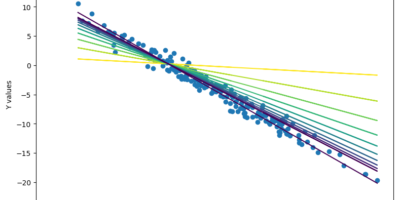It was 10:02 am on Wednesday January the 30th, 2013. The lights were fading and the music was coming up at the Carlu event center. This was Research in Motion’s moment, their chance for redemption from a rapidly shrinking market share and their first user decline.
Research in Motion came a long way to make it to this point. RIM was a pioneer in the smart-phone world. Their Blackberry smartphone was the first to break into the consumer market, being featured by Oprah Winfrey as her favourite tech in 2003. Between 2003 and 2011 RIM’s sales grew 5700%. This is when things started to go badly for RIM. Failing to fully accept that the new platforms from Apple and Google could compete with them, RIM did not make the necessary changes to their products. Blackberry devices were also using an operating system that they had originally designed for pagers with a transmit speed slower than a 5-year-old could write.
In 2010 RIM realised that they needed some major changes. They made several very smart moves. The first was that they decided to build their own operating system based on QNX, instead of joining on with Google’s Android. QNX is a real-time operating system and company founded by University of Waterloo graduates. QNX’s latest offering is one of the most impressive and versatile operating systems used today. It runs many things, from TV remotes to cars and nuclear power plants. The reliability, performance, and versatility of QNX makes it well suited for a phone operating system. It was a wise decision not to use Android; most companies now using it are finding that it is difficult to distinguish themselves from their competitors in any way other than by price.
RIM’s next step was to recognize that they did not have good user interface designers. They corrected this by acquiring a small company called The Astonishing Tribe. TAT was known for designing several outstanding user interfaces for different smartphone manufacturers, such as Motorola and Samsung. They also recognized that providing good developer tools with user interface components that implicitly produce beautiful designs with ease is important to success. They tasked TAT with developing this framework, and TAT was successful. This has brought Blackberry from being one of the most frustrating platforms to develop for to the most enjoyable.
With this foundation in place, RIM spent 2011 and 2012 building their new software platform and encouraging developer interest. In the middle of 2012, most analysts and American bloggers were predicting that Blackberry 10 would come too late for RIM to regain market share. However, RIM was successful in demonstrating to developers that Blackberry 10 is an impressive platform that they should be part of. In late 2012 analyst predictions started to get brighter and NDA protected previews of Blackberry 10 devices had some well-known Apple loyalists apologising for being wrong. The stock soured up almost 200% over the few months leading up to launch as inverters began to once again have faith in RIM.
This is what led up to 10:02 am on Wednesday, January 30, 2013. The Blackberry 10 was near trending as the world watched to see what RIM had to offer. As the lights came back up, RIM’s CEO, Thorsten Heins, presented Blackberry 10 to the world. The world enjoyed what they saw and RIM has since received some of the best press in years. Although some reviewers are questioning whether it is significantly better than the other platforms, most agree that Blackberry is back in the game. RIM performed well. They had a good release of their new platform and even had a few surprises. RIM also announced that they will be changing their operating name to BlackBerry.
There was some drop in the stock price at launch. This has primarily been attributed to two things: large sales by massive investment firms that don’t want to take the post-launch risk and to the delay in the United States availability to March (Now available in UK and Canada.) The remainder of the drop was just followers worrying it would drop more. With most of the major Apps on board and more devices coming out this year, I expect BlackBerry will have regained significant value by this time next year.
The full touch-screen model (Z10) is a sexy device. It is comfortable to hold and fun to use. It’s specs are comparable to current high-end devices with a 1.5GHz dual core processor, 2GB of RAM, 16GB internal storage, micro-SD slot, 10 Hours talk-time, all WIFI types, 4G LTE, Bluetooth 4, micro-USB, micro-HDMI, 8MP rear camera, 2MP front camera, NFC, and much more. The screen resolution is 1280×768 (355ppi.) But, these specs are common among most phones now (excluding several key ones still missing from the iPhone 5.)
The real joy comes in the Blackberry 10 operating system. Blackberry has taken everything good from their old operating system, all the features we expect in a modern smartphone, and a few unique additions to create a remarkable user experience. The core of Blackberry that they brought in is excellent multi-tasking, highly integrated communication, and an industry-leading keyboard. They have done this very well. For example, the predictive keyboard is creepily accurate. The surprises include Dropbox integration into the file system and a camera that ensures you don’t miss those moments. Unfortunately, this article is well over its word limit and needs to be continued at a later time. There will be a more detailed review in the next issue of The Iron Warrior.
Blackberry has executed an excellent launch, and it will be exciting to see what comes.




Leave a Reply